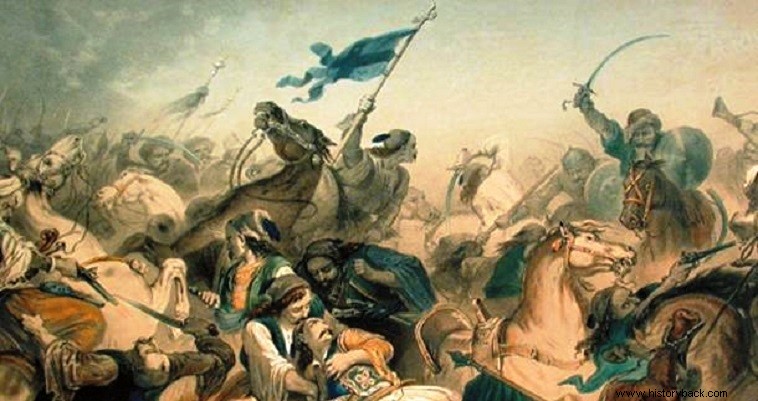
The 200th anniversary of the start of the Greek Revolution gave rise to many new researches and publications. One of the thinnest chapters of our literature and knowledge about 1821 is the Ottoman sources, and in this field some very important books have been published. One of the most recent is the publication by historians Ilias Kolovu, Sukru Ilijak and Mohammad Shariat Panahi, entitled "The Wrath of the Sultan. Autograph decrees of Mahmut II in 1821", released a few weeks ago (2021) by the publications of the Hellenic Open University.
OF PETRO PAPOPOLIVIOU
SOURCE:APOPSEIS
This is a valuable "big window", which sheds light on Mahmut II's attitude towards the Revolution and includes the exemplary edition of 62 translated sultanic documents concerning the treatment of the situation in the Transdanubian Dominions, the Peloponnese, Athos, Thessaloniki, Kydonia , etc., but also in dramatic events such as the hanging of Patriarch Gregory V'. The publication is prefaced with an extensive well-written introduction by the three editors. As they emphasize, the documents offer the opportunity to examine the events of the first year of the Revolution from the point of view of the "other", "from the point of view of the Ottoman power, and indeed at the highest level".
The space of this article limits us in terms of the further presentation of the book, which is the product of painstaking research and brings forth a wealth of new information. We will focus only on the very important document concerning the Cypriot 1821. It is an undated proposal of the grand vizier Haji Salih Pasha to Sultan Mahmut II and the latter's brief reply. (The authors date the letter to the end of June 1821, but it is a document written a month later.) The grand vizier reports that he received several letters from the Muhassili of Cyprus Kütçuk Mehmet, from other Ottoman officials of the island and from the Muslim inhabitants. And he continues:
"The muhassilis affirms that the imperial orders were implemented for the hanging of the archbishop of Cyprus [Kiprianos], three more metropolitans and fifty other people who had been involved in the stand. Their houses were sealed. A new archbishop and metropolitans were appointed in their place, with the guarantee that they would settle the affairs of the numerous ragiados in Cyprus. Also, the muhassilis lists the names [of those arrested and executed] and asks to be sent the berats that ratify the appointment of their replacements. However, about twenty Giauri who took part in the standoff and are included in the list took refuge in the consulates of Russia, France and Austria. The consuls denied that they had harbored fugitives, who should be surrendered as they are vassals of the High State. The muhassilis suggests that an imperial decree be sent to seal their own houses as well.
He also mentions that the monastery of Tsykkou [Kykkou] in the kaza of Lefka is fortified and should be demolished in order to eliminate any possible threat. And he adds that in the house of the executed archbishop, two golden objects with precious stones, used in their pseudo-rituals, were discovered, and he sent one [to Constantinople] to be valued. (…) The memorandum of the Naip and the report of the [Muslim] inhabitants of Cyprus applaud the behavior of the Muhassili and advocate to His Majesty [the Sultan] in favor of his remaining in office. (…)”
If we attempt to summarize the extremely important information of the document, we will focus on the Ottoman claim of a stand that the ragiades were also preparing in Cyprus, on the finalization of the number of those listed at seventy-five (of which twenty managed to escape) and on the looting of the Archdiocese. The one gold object is described as a "wretched crown" later in the document, i.e. it was Cyprian's episcopal miter.
However, the most shocking and completely unknown element of the document is Kiucuk Mehmet's proposal for the demolition of the Kykkos Monastery (!), which can be combined with the information about the revolutionary actions and the discovery of weapons in the Monastery. Both the vizier and Mahmud II himself refused to demolish the monastery citing the "Holy Law" which did not allow the demolition of old churches. Fortunately... The documents confirm (for those who need it...), that the "numerous ragiades of Cyprus" were treated by the Ottomans in 1821 just like "the rest of the infidels of the Roman millet".
